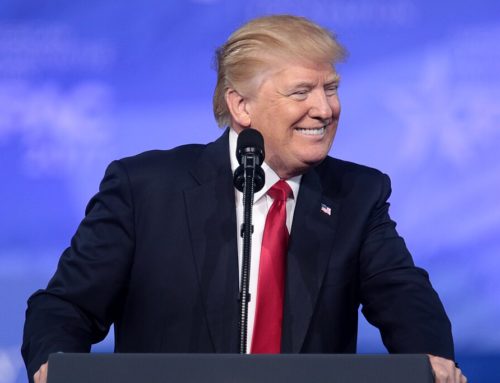1. New Colombia project for Denarius Metals
London, April 7, 2025 – Denarius Metals, a Canadian junior exploration company, has officially commenced mining activities at its Zancudo gold-silver project in Colombia. This marks a significant milestone for the company as it embarks on the production phase of this historic site.
Project Overview
The Zancudo Project is located in the Municipality of Titiribí, Department of Antioquia, approximately 30 kilometers southwest of Medellin. The project encompasses three adjoining mining concession contracts and one exploration license, covering a total area of 1,054 hectares.
Historical Significance
Gold was first discovered in the Zancudo district in 1746, and mining activities have been ongoing since 1793. The most significant period of production occurred between 1863 and 1927 under the operation of Sociedad de Zancudo. The mine was closed in 1945, but the district has produced an estimated 1.4 to 2 million ounces of gold equivalent over its history.
Modern Developments
Denarius Metals acquired the Zancudo Project from Gran Colombia Gold in 2021. Following an extensive exploration program by IAMGOLD Corporation, which included 40,100 meters of diamond drilling, Denarius Metals established a Mineral Resource estimate of 4.1 million tonnes grading 6.5 g/t gold and 107 g/t silver. This equates to approximately 1,060,000 gold equivalent ounces.
Commencement of Mining
The commencement of mining at Zancudo is a testament to Denarius Metals’ commitment to revitalising this historic site. The company has signed offtake contracts for 100% of the concentrate production, ensuring a steady market for its output. The first production is expected to significantly contribute to the local economy and provide employment opportunities in the region.
Future Prospects
With the Zancudo Project now operational, Denarius Metals is poised to become a key player in the Colombian mining sector. The company’s strategic focus on sustainable and responsible mining practices will be crucial in maintaining the project’s long-term viability and success.
2. SHL Medical opens new manufacturing facility in US

North Charleston, South Carolina – April 1, 2025 – SHL Medical, a global leader in the design, development, and manufacturing of advanced self-injection solutions, has officially inaugurated its new state-of-the-art manufacturing facility in North Charleston, South Carolina. This strategic expansion marks a significant milestone in the Swiss-based company’s global growth, reinforcing its commitment to meeting the increasing worldwide demand for autoinjectors, particularly in the cardiometabolic sector.
A Major Investment in Innovation and Growth
The new 360,000-square-foot facility represents a substantial investment of $220 million. It is equipped with cutting-edge medical device injection molding technology and fully automated assembly capabilities, ensuring unmatched precision, efficiency, and quality in SHL Medical’s advanced drug delivery solutions. The facility has already created over 300 local jobs, contributing to the economic growth of the region.
Strengthening US Market Presence
By leveraging its existing final assembly, labeling, and packaging operations in Deerfield Beach, Florida, and integrating recent acquisitions under SHL Advantec, the North Charleston facility enhances SHL Medical’s US presence and solidifies its leadership in large-scale autoinjector production. The company is on track to deliver 1.5 billion devices to customers in 2025.
Commitment to Sustainability and Local Economy
“The most trusted autoinjector brand is now made in the USA. We are proud to be contributing to the growth of the local economy and becoming a key player in the area while contributing to our sustainability goals,” said Kimberlee Steele, Managing Director North America at SHL Medical.
Grand Opening Event
The grand opening event, attended by approximately 180 guests, including South Carolina Governor Henry McMaster and Swiss Embassy Consul General Urs Broennimann, marked the official opening of SHL Medical’s innovative autoinjector production in the United States.
3. Trump’s ‘liberation day’ tariffs could spur raft of new trade deals

On April 2, 2025, President Donald Trump declared “Liberation Day,” marking the introduction of sweeping tariffs on a wide range of imported goods. This move, reminiscent of the Smoot-Hawley Tariff Act of 1930, has sparked significant debate and speculation about its potential impact on global trade dynamics.
The Tariffs Explained
The new tariffs include a universal 10% levy on all imported goods, with additional tariffs on specific countries based on their trade practices. For instance, countries like China and Vietnam face tariffs as high as 34% and 46%, respectively. The rationale behind these tariffs, according to the Trump administration, is to correct decades of trade imbalances and to encourage the reindustrialisation of the United States.
Potential for New Trade Deals
While the immediate reaction to the tariffs has been mixed, with some fearing a trade war and others seeing an opportunity for renegotiation, there is a growing consensus that these tariffs could lead to a raft of new trade deals. Countries affected by the tariffs may seek to negotiate more favorable terms to reduce the economic impact on their exports. This could result in a series of bilateral and multilateral trade agreements aimed at lowering tariffs and opening up new markets.
Economic Implications
The economic implications of these tariffs are multifaceted. On one hand, they could lead to higher prices for consumers and potential retaliation from other countries. On the other hand, they might stimulate domestic production and create new opportunities for American businesses. The true impact will depend on how other nations respond and whether new trade deals can be successfully negotiated.
Conclusion
Trump’s “Liberation Day” tariffs represent a bold move in U.S. trade policy. While they carry risks, they also present an opportunity for the U.S. to renegotiate trade terms and potentially spur a new era of trade agreements. As the global trade landscape adjusts to these changes, the coming months will be crucial in determining the long-term effects of this policy shift.
4. How Blockchain is Transforming Trade Finance

In recent years, the trade finance industry has witnessed a significant shift from traditional paper-based processes to digital solutions. Among these innovations, digital guarantees powered by blockchain technology are emerging as a game-changer, promising to enhance security, streamline operations, and improve transparency.
What are Digital Guarantees?
Digital guarantees are electronic versions of traditional paper-based guarantees used in trade finance. These guarantees ensure that a buyer’s obligations to a seller are met, providing a safety net in international trade transactions. Traditionally, these guarantees have been cumbersome, involving lengthy manual processes and significant risks of fraud and errors.
The Role of Blockchain in Trade Finance
Blockchain technology, with its decentralised and immutable ledger, offers a robust solution to many of the challenges faced by traditional trade finance systems. By leveraging blockchain, digital guarantees can be issued, verified, and tracked in real-time, reducing the risk of fraud and errors.
Benefits of Blockchain-Powered Digital Guarantees
- Enhanced Security: Blockchain’s cryptographic security ensures that digital guarantees are tamper-proof and authentic. Each transaction is recorded on a transparent ledger, making it nearly impossible to alter without detection.
- Improved Efficiency: The automation of processes through smart contracts reduces the need for manual intervention, speeding up the issuance and verification of guarantees. This leads to shorter turnaround times and lower operational costs.
- Greater Transparency: Blockchain provides real-time visibility into transactions, allowing all parties involved to track the status of guarantees. This transparency builds trust and reduces disputes.
- Fraud Prevention: The immutable nature of blockchain records ensures that once a guarantee is issued, it cannot be forged or duplicated. This significantly reduces the risk of fraud associated with paper-based guarantees.
Case Studies and Real-World Applications
Several financial institutions and trade finance platforms have already begun implementing blockchain-based digital guarantees. For instance, the we.trade platform, supported by major banks, uses blockchain to facilitate secure and efficient trade finance transactions. Similarly, IBM’s blockchain solutions for trade finance have demonstrated the potential to streamline cross-border trade and reduce risks.
Challenges and Future Outlook
While the benefits of blockchain in trade finance are clear, there are still challenges to overcome. These include regulatory hurdles, the need for standardisation, and the integration of blockchain with existing systems. However, as the technology matures and more stakeholders adopt digital guarantees, the trade finance industry is poised for a significant transformation.
Conclusion
The rise of digital guarantees, powered by blockchain technology, marks a new era in trade finance. By enhancing security, improving efficiency, and providing greater transparency, blockchain is set to revolutionise the way trade finance operates, paving the way for a more secure and efficient global trade ecosystem.







